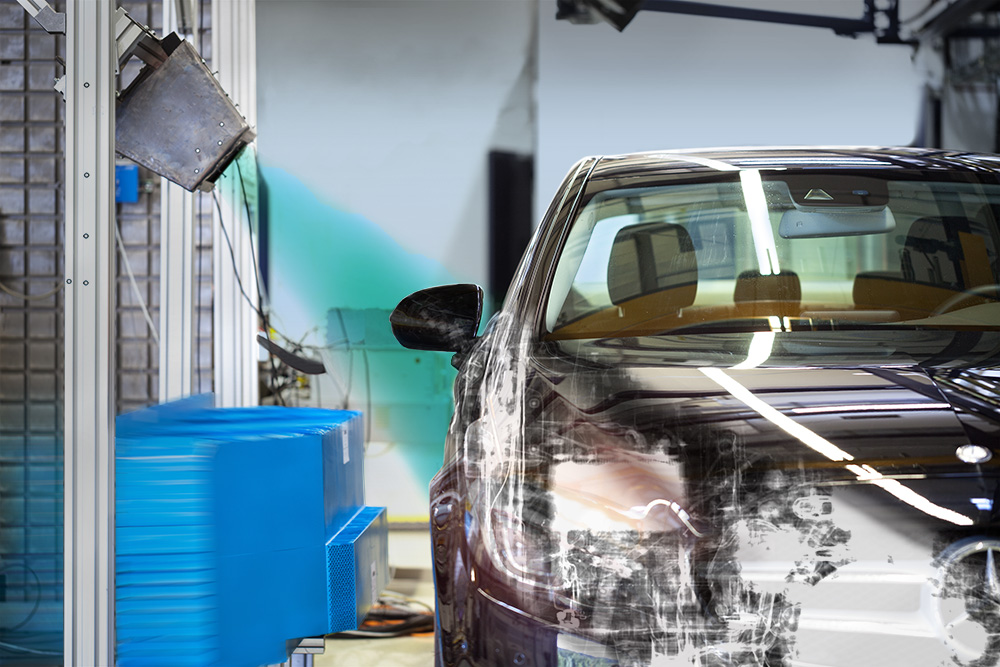Modern, lightweight vehicles are produced of ever more complex materials and structures. To understand the constitution of these structures, X-ray and computed tomography have become established in research and development. Up to now, X-ray was mainly restricted to static investigations. With the technology of X-CC, the Fraunhofer-Institute for High-Speed Dynamics, Ernst-Mach-Institut, EMI, for the first time combines X-ray with the high-dynamic deformation processes under crash conditions. This enables to understand how inner structures of a vehicle, which are not visible from the outside, behave during crash. Based on these gained insights, materials and numerical models can be optimized. X-raying is an established material research technology, which in the industrial sector has thus far been restricted primarily to static and quasistatic analyses.
With the X-CC technology, Fraunhofer EMI combines X-ray technology with the highly dynamic deformation processes under crash conditions and thereby contributes to the overall understanding of the behavior of inner car structures during a crash. The results are included into the simulation for the optimization of structures, structural components or materials. The long-term goal is to obtain an X-ray video of the crash tests. This business branch of Fraunhofer EMI, which has developed into a large, successful research field, has sparked growing interest in industry and research. EMI develops new methods, simulations and fields of application, conducts industrial projects for notable clients and plans the continuous development of test setups for future studies.
Mechanical Behavior of Batteries Under Dynamic Loading – Battery Test Bench
The call for an increase in electric vehicles on our roads requires the application of efficient mobile sources of energy. As a result, electric energy storage systems are growing in importance in the field of mobility. However, as energy density and the overall capacity of available energy storage continually increase, so does their risk potential. A special test bench for the characterization of lithium ion cells at Fraunhofer EMI allows for the destructive testing of charged battery cells at different load modes from the static to the dynamic range with load velocities of up to 10 meters per second and loads of up to 50 tonnes. Different cell types can be examined with this apparatus with respect to their deformation behavior under various conditions.
A further effective possibility of researching batteries that have undergone compression, crushing or other types of destruction is by computed tomography (CT). This allows the visualization of the interior of a cell before and after a test and enables the analysis of damage.
 Fraunhofer Group for Materials and Components - Materials
Fraunhofer Group for Materials and Components - Materials